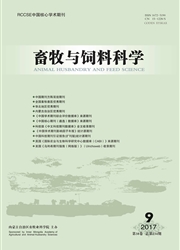

 中文摘要:
中文摘要:
Enterotoxigenic Escherichia coli(ETEC) are important intestinal pathogens that cause diarrhea in humans and animals.Although probiotic bacteria may protect against ETEC-induced enteric infections,the underlying mechanisms are unknown.In this study,porcine intestinal epithelial J2 cells(IPEC-J2) were pre-incubated with and without Lactobacillus rhamnosus ATCC 7469 and then exposed to F4+ ETEC.Increases in TLR4 and NOD2 mRNA expression were observed at 3 h after F4+ ETEC challenge,but these increases were attenuated by L.rhamnosus treatment.Expression of TLR2 and NOD1 mRNA was upregulated in cells pre-treated with L.rhamnosus.Pre-treatment with L.rhamnosus counteracted F4+ ETEC-induced increases in TNF-αconcentration.Increased PGE2.concentrations were observed in cells infected with F4+ ETEC and in cells treated with L.rhamnosus only.A decrease in phosphorylated epidermal growth factor receptor(EGFR) was observed at 3 h after F4+ ETEC challenge in cells treated with L.rhamnosus.Pre-treatment with L.rhamnosus enhanced Akt phosphorylation and increased ZO-1 and occludin protein expression.Our findings suggest that L.rhamnosus protects intestinal epithelial cells from F4+ ETEC-induced damage,partly through the anti-inflammatory response involving synergism between TLR2 and NODI.In addition,L.rhamnosus promotes EGFR-independent Akt activation,which may activate intestinal epithelial cells in response to bacterial infection,in turn increasing tight junction integrity and thus enhancing the barrier function and restricting pathogen invasion.Pre-incubation with L.rhamnosus was superior to co-incubation in reducing the adhesion of F4+ ETEC to IPEC-J2 cells and subsequently attenuating F4+ ETEC-induced mucin layer destruction and suppressing apoptosis.Our data indicate that a selected L.rhamnosus strain interacts with porcine intestinal epithelial cells to maintain the epithelial barrier and promote intestinal epithelial cell activation in response to bacterial infection,thus protecting cells from the deleterio
 同期刊论文项目
同期刊论文项目
 同项目期刊论文
同项目期刊论文
 期刊信息
期刊信息
